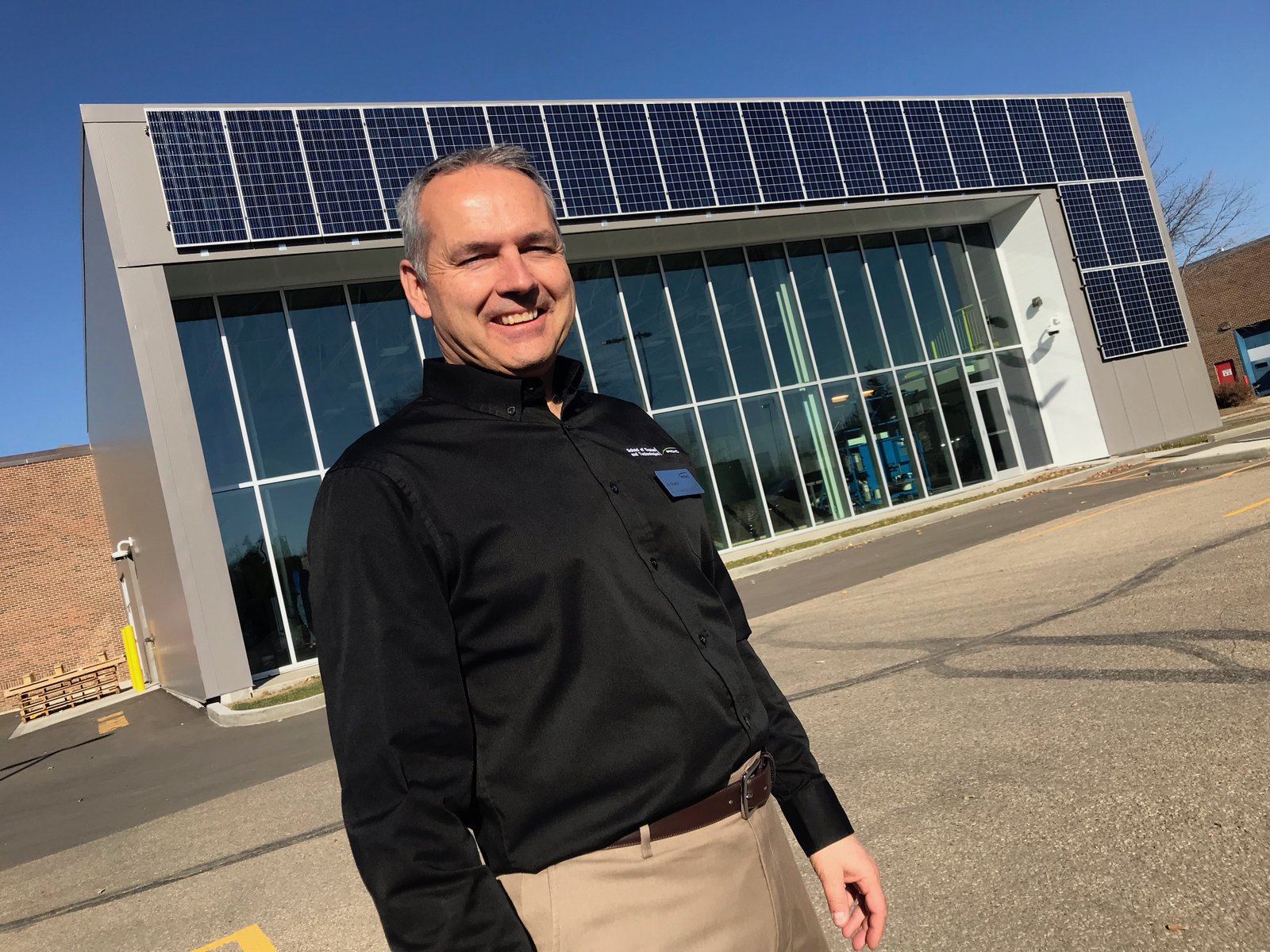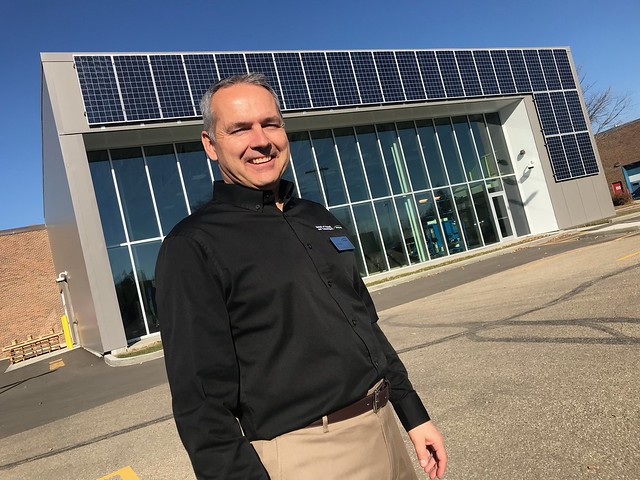By David Dodge and Scott Rollans
Red Deer College has surged beyond its own goals for renewable energy by installing a 1.6-megawatt solar system, the largest on any post-secondary institution in Canada.
This major initiative caught many by surprise. But, according to Joel Gingrich, dean of trades and technologies, it’s been in the works for some time. “There’s been a massive initiative around alternative energy systems at the college—part of a larger plan a green campus initiative that’s been in the works for 10 to 15 years. But, in particular, within the last year and a half, there’s been a major investment in alternative energy systems.”
We were at the ReThink Red Deer Renewable Energy Fair co-presented by Peavey Mart and Sun Country Highway and were more than a little surprised by what’s happening in Alberta’s third largest city, midway between Calgary and Edmonton.
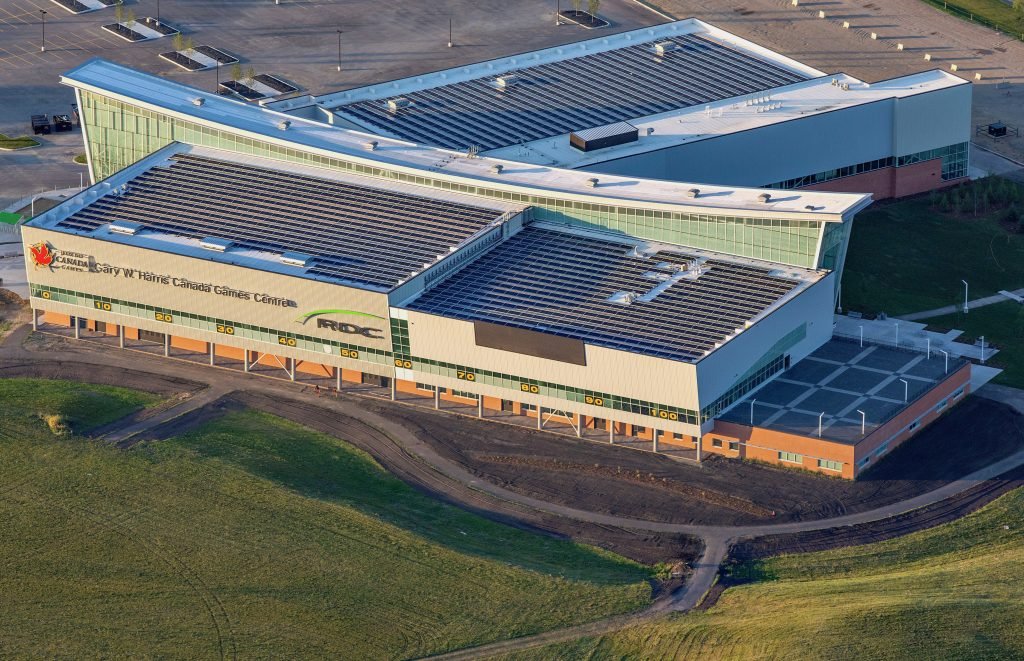
The large solar array on the Gary W. Harris Canada Games Center at Red Deer College is just part of the 1.6-megawatt array that provides 66% of the electricity for the campus. Photo Kuby Energy
Add Solar, cogen and energy efficiency – save a million
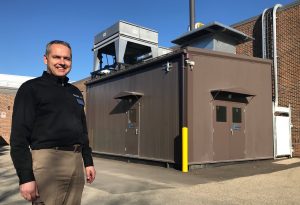
Red Deer College expects to save $1 million per year by producing their own electricity with solar and cogeneration systems. Photo David Dodge, GreenEnergyFutures.ca
“Our target, with all of the alternative energy production systems, was to achieve a 20 percent reduction in utilities, says Gingrich.
They’ve beaten that goal by over three times. The solar and the 1-megawatt cogeneration system just installed Red Deer College will produce 66 per cent of its electricity right on campus. Add to this some LED lighting retrofits, and the system is projected to save the campus over a million dollars annually in utility costs, according to Gingrich.
The solar is everywhere. The new Gary W. Harris Canada Games Centre is covered with solar, and a solar-covered walkway connects it to campus. Many the other buildings on campus have their own solar arrays, and student residences will have solar on the walls and rooftop as well.
The campus also has a brand new 4,000 square foot Alternative Energy Lab, featuring hi-tech solar and wind power simulation equipment plus a working 1-kilowatt micro-cogeneration unit. The lab’s roof boasts a working 24-kilowatt solar system that can be reconfigured and monitored for education and research.
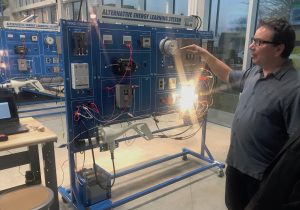
Simulation equipment in Red Deer College Alternative Energy Lab. Photo David Dodge, GreenEnergyFutures.ca
The lab will be used to teach trades and technology students about alternative energy. It will also be made available to the community and industry for product testing and research and development.
The roof also features a reference solar array, measuring the effects of different solar angles, snow cover, and other factors. One octagon-shaped solar unit points in eight different directions to test various orientations.
“We have 2,000 to 3,500 students a year just through our trades and technologies area that are going into conventional careers,” says Gingrich. “But, even in those conventional businesses, there’s still elements of alternative energy that the students the graduates will be exposed to. We want to make sure they have enough familiarity to be able to contribute to the business or start their own business in that area,” says Gingrich.
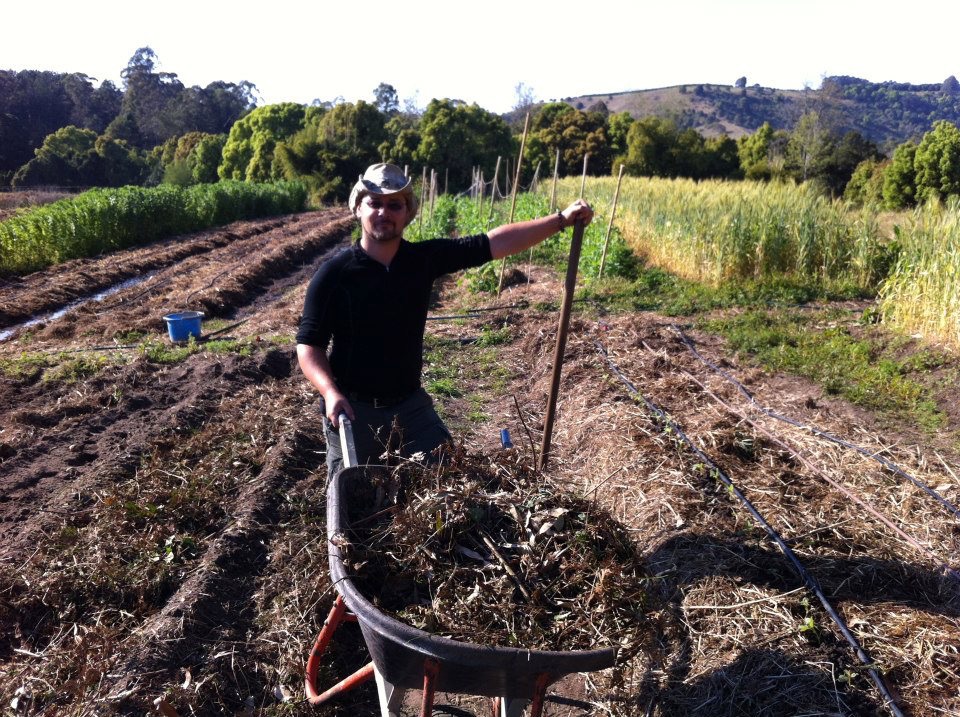
Rene Michalak at the International Permaculture Research Institute in New South Wales. ReThink has programs for kids, a virtual store and they run Eco-Living and Renewable Energy fairs twice a year. Photo Shazad Mahmood
ReThinking Red Deer – Check!
Meanwhile, Red Deer College is working closely with the community. The Renewable Energy Fair was a ReThink Red Deer (facebook) event presented at Red Deer College.
ReThink Red Deer, which began as a protest group, has developed into a very active group in Red Deer. “We’re non-profit society incorporated in 2010, but it started as a grassroots effort by a man named Lorne Daniel who has a lifetime Red Deerian,” says project lead Rene Michalak.
Daniel believed Red Deer planners were overly fixated on cars. So, in 2007, he created a slide show and started making presentations. “It ruffled a few feathers of some city officials as a result of it being a bit of a provocative statement,” says Michalak. Nevertheless, Daniel’s poignant message morphed into a local movement for sustainability.
These days, ReThink Deer hosts EcoLiving Fairs, runs the Little Green Thumbs program (teaching kids where food comes from), and is busy with the Piper Creek Restoration project, where the city operates a community garden and ReThink Red Deer is enhancing the site with a food forest and pollinator habitat.
“Our mission really is to live sustainably and show the community how to do that, through hands-on workshops and skill-building opportunities—taking it beyond the conversation and into practical living,” says Michalak.
The Renewable Energy Fair we attended featured booths on everything from solar to energy audits, and even a company with a machine that turns organic waste into fuel. Red Deer College is installing one of these units in the cafeteria.
The fair offered workshops on solar passive house design and electric vehicles, as well as a presentation by a local car dealership, Scott Subaru, Canada’s first car dealership built to the passive house standard.
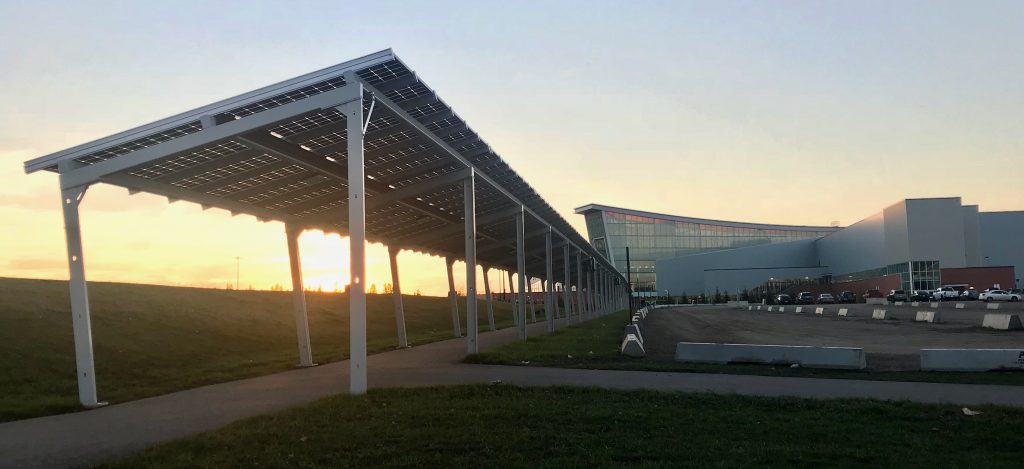
Solar pedway, part of the 1.6-megawatt solar system that powers Red Deer College. Photo David Dodge, GreenEnergyFutures.ca
Sleepy small city college with a big vision
This vision is rubbing off on other local businesses and residents. Traveling around Red Deer, you’ll even see solar on the local Harley Davidson Dealership.
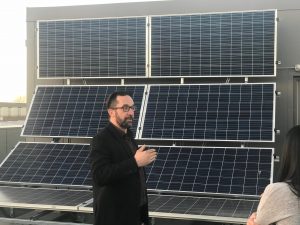
David Pye, Associate Dean at Red Deer College with reference solar array on the roof of the new Alternative Energy Lab. Photo David Dodge, GreenEnergyFutures.ca
After slogging away in the trenches introducing people to the idea of sustainability for many years, Michalak has to stop and pinch himself when he reflects on some of the amazing things happening at Red Deer College.
“I think that is going to put the Red Deer even further in the spotlight and on the map for innovation and forward thinking, and show the rest of the world that it’s not just a hidden community where there’s not much going on,” says Michalak.
This will almost certainly happen very soon; when Red Deer College hosts the Canada Winter Games in February.
“There is quite a cosmopolitan culture emerging here – we’re also referred to as the Portland of the prairies,” says Michalak with a chuckle.
As for Red Deer College, it’s looking to take even more steps in its remarkable journey towards sustainability. “We’re starting to look at what would it take to become a net-zero campus,” says Gingrich.
Portland of the prairies, indeed.
